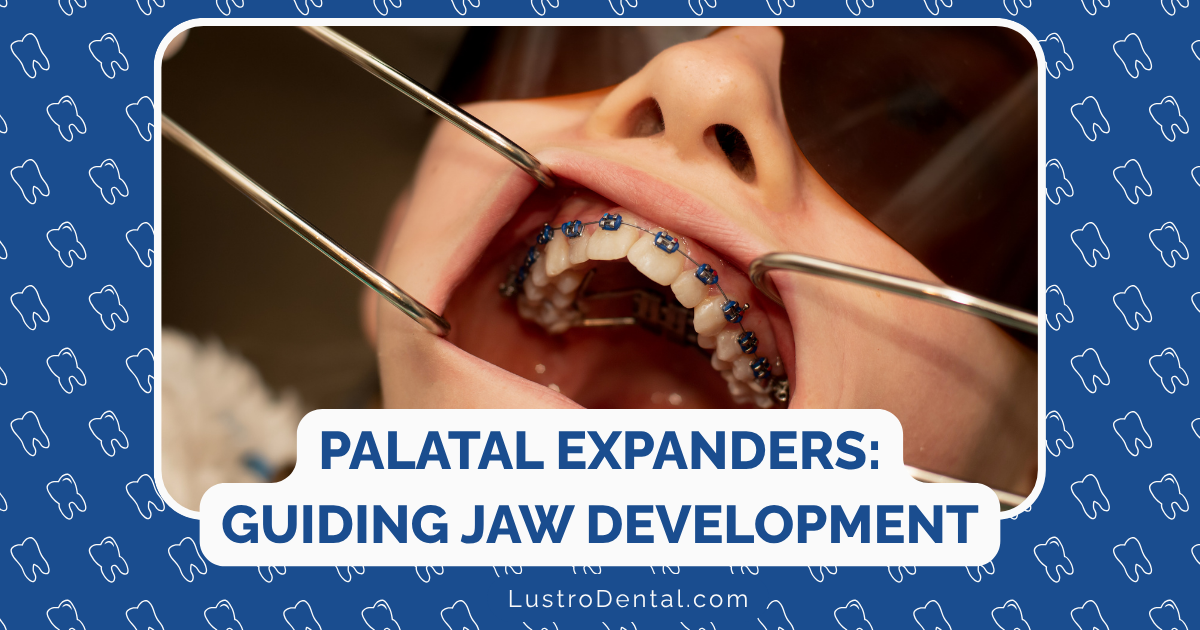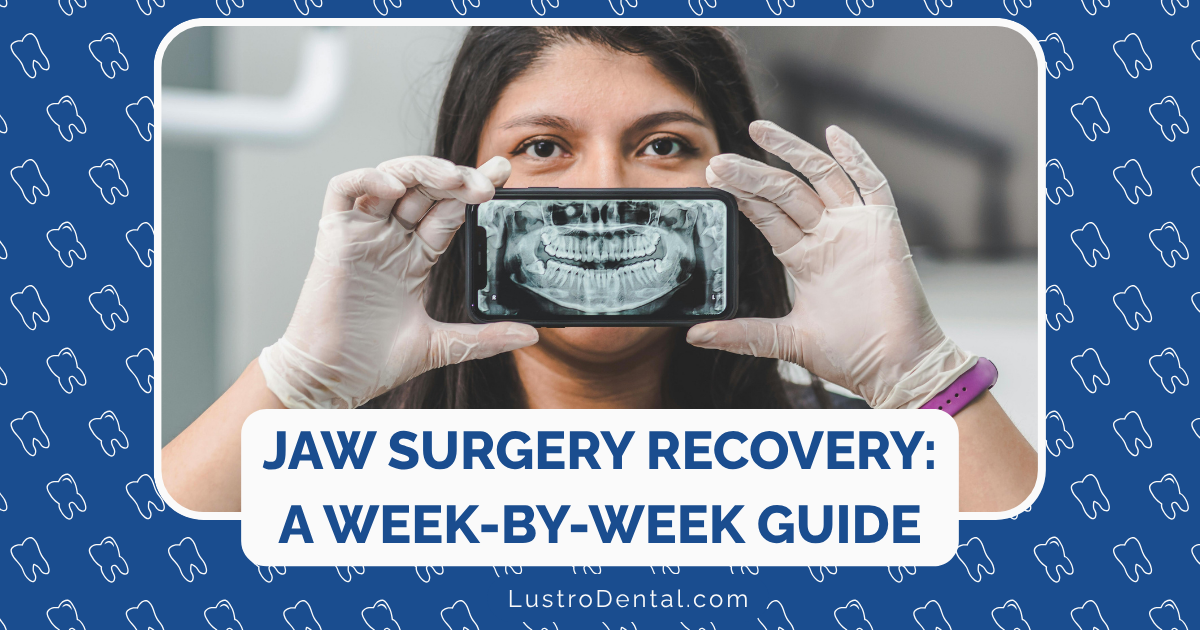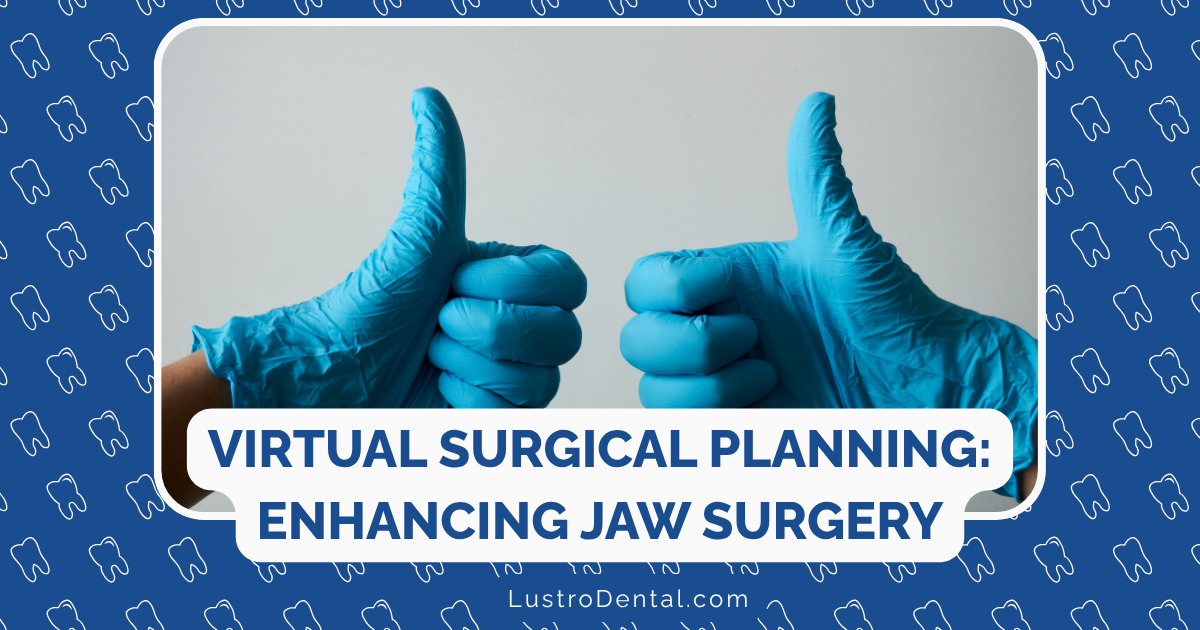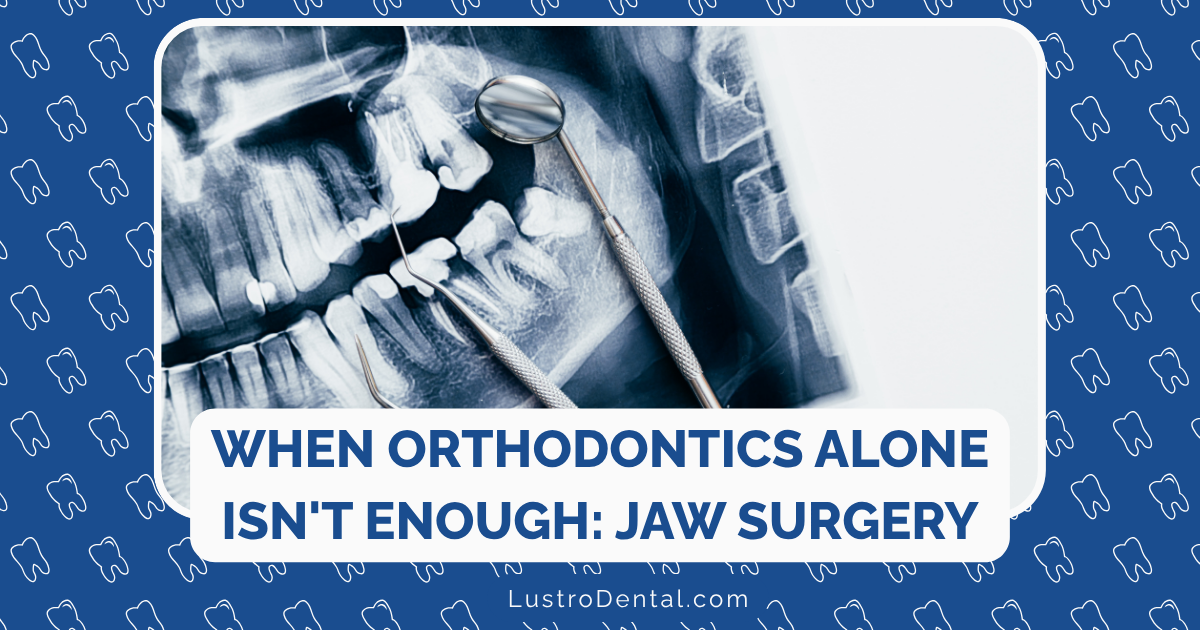Palatal Expanders: How They Work and Why They’re Often Recommended

When parents first hear that their child needs a “palatal expander,” many envision a medieval torture device. As an orthodontist who’s placed thousands of these appliances, I understand the concern—the concept of widening the roof of a child’s mouth sounds intimidating. However, palatal expanders are actually remarkable devices that harness the body’s natural growth processes to create positive changes with minimal discomfort.
In fact, palatal expansion is one of orthodontics’ most elegant solutions: a relatively simple intervention that can prevent a cascade of more complex dental problems down the road. In this comprehensive guide, I’ll explain how palatal expanders work, why they’re so frequently recommended, and what patients and parents can expect during treatment.
What Is a Palatal Expander?
A palatal expander is an orthodontic appliance designed to widen the upper jaw (maxilla) by gradually separating the two halves of the palate along the midpalatal suture—the junction where the left and right sides of the upper jaw meet. This creates additional space in the dental arch, allowing for proper tooth alignment and improved jaw relationships.
Dr. Sarah Johnson, orthodontist at Metropolitan Orthodontics, explains: “The palate actually consists of two separate bones that don’t fully fuse until after puberty. Palatal expanders take advantage of this natural anatomy, gently guiding these bones apart to create width where it’s needed.”
How Do Palatal Expanders Work?
The science behind palatal expansion is fascinating—it’s one of the few orthodontic treatments that creates actual skeletal changes rather than just moving teeth.
The Biological Process
When a palatal expander is activated, it applies lateral force to the two halves of the maxilla. This force gradually separates the midpalatal suture, creating a gap between the two halves of the upper jaw. The body then fills this gap with new bone, effectively widening the palate permanently.
This process, called distraction osteogenesis, is the same biological principle used in certain types of bone-lengthening surgeries. The key difference is that with palatal expansion, we’re working with a natural growth site (the suture) that hasn’t yet fused.
The Mechanical Process
Most palatal expanders are fixed appliances that are attached to the upper molars using bands or bonding material. They contain an expansion screw in the center that, when turned with a special key, pushes the two halves of the appliance (and thus the two halves of the palate) away from each other.
Typically, the expander is activated by turning the key once daily, which separates the palatal bones by approximately 0.25mm per turn. This slow, controlled process allows for comfortable expansion and proper bone formation.
A visible sign that the expander is working is the appearance of a gap between the upper front teeth. This gap forms as the two halves of the maxilla separate and is later closed with braces or other orthodontic appliances.
Types of Palatal Expanders
Several types of expanders are used in modern orthodontics, each with specific applications:
1. Rapid Palatal Expander (RPE) / Hyrax Expander
Design: A metal framework with a central expansion screw, attached to the upper molars with bands.
Best for: Most cases requiring significant expansion in growing children.
Activation: Typically turned once daily using a special key.
Expansion rate: Approximately 0.25mm per turn, or about 1-2mm per week.
2. Quad Helix Expander
Design: A fixed wire appliance with four helical springs that deliver continuous gentle force.
Best for: Younger children and cases requiring less expansion or more posterior expansion.
Activation: Pre-activated by the orthodontist at appointments, no daily turning required.
Expansion rate: Gradual expansion over 2-3 months.
3. Removable Palatal Expander
Design: Similar to a removable retainer with an expansion screw in the center.
Best for: Minor expansion cases or as a retention device after fixed expansion.
Activation: Turned periodically as directed by the orthodontist.
Expansion rate: Slower than fixed expanders, typically 0.5-1mm per month.
4. Surgically Assisted Rapid Palatal Expansion (SARPE)
Design: Similar to a traditional RPE but used in conjunction with a surgical procedure.
Best for: Adults and older teens whose palatal suture has already fused.
Process: Requires a minor surgical procedure to weaken the midpalatal suture before expansion.
Expansion rate: Similar to traditional RPE after surgical release.
Dr. Michael Chen of Advanced Orthodontic Solutions notes: “The type of expander we choose depends on the patient’s age, the amount of expansion needed, and the specific problems we’re addressing. There’s no one-size-fits-all approach to palatal expansion.”
Why Are Palatal Expanders Recommended?
Orthodontists recommend palatal expanders for several specific conditions:
1. Posterior Crossbite
A posterior crossbite occurs when the upper back teeth sit inside the lower back teeth when biting down. This misalignment can force the lower jaw to shift to one side when closing, potentially leading to asymmetric jaw growth and TMJ problems.
Research published in the American Journal of Orthodontics and Dentofacial Orthopedics shows that untreated crossbites can lead to long-term facial asymmetry and increased risk of temporomandibular disorders. Palatal expansion has a success rate of over 90% in correcting posterior crossbites in growing children.
2. Crowding and Impacted Teeth
When the upper jaw is too narrow, there may not be enough space for all permanent teeth to erupt properly. This can lead to:
- Dental crowding
- Impacted teeth (particularly canines)
- Teeth erupting in the wrong position
- Need for tooth extractions
Expansion creates additional arch perimeter, often providing enough space for crowded teeth to align naturally or with minimal additional orthodontic intervention.
A 2023 study in the European Journal of Orthodontics found that early palatal expansion reduced the need for extraction of permanent teeth by approximately 50% in patients with moderate to severe crowding.
3. Narrow Smile and Aesthetic Concerns
A narrow upper jaw can result in a narrow smile with dark corners (buccal corridors) visible when smiling. Expansion can broaden the smile arc, creating a fuller, more aesthetic smile.
4. Breathing and Airway Concerns
The roof of the mouth is also the floor of the nasal cavity. By widening the palate, expansion can increase nasal volume and improve nasal airflow.
Recent research published in the Journal of Sleep Research has shown that palatal expansion can improve breathing in some children with sleep-disordered breathing and may reduce symptoms of obstructive sleep apnea.
Dr. Lisa Patel, orthodontist and sleep medicine specialist, explains: “We’re increasingly recognizing the connection between maxillary width and airway function. For some children with breathing difficulties, palatal expansion can be part of a comprehensive treatment approach alongside ENT evaluation.”
5. Preparation for Phase 2 Orthodontics
Expansion is often part of “Phase 1” orthodontic treatment, creating proper arch width before comprehensive braces or aligners (“Phase 2” treatment) are applied. This can simplify and shorten the second phase of treatment.
The Ideal Age for Palatal Expansion
Timing is critical for successful palatal expansion. The midpalatal suture begins to fuse progressively during puberty and is typically fully fused by the late teens or early twenties.
Optimal Timing
The American Association of Orthodontists recommends that all children have an orthodontic evaluation by age 7. This timing is strategic for several reasons:
- Most children still have primary (baby) molars that can be used to anchor the expander
- The midpalatal suture is still very responsive to expansion forces
- Many children are beginning to develop permanent teeth and potential crowding can be identified
- Crossbites and other jaw discrepancies are already evident but still easily correctable
Age-Related Considerations
Ages 7-10: Ideal timing for most palatal expansion cases. The suture is highly responsive, and expansion is typically achieved with minimal force.
Ages 11-14: Still effective, though slightly more force may be required, and the expansion may take longer.
Ages 15-17: Increasingly difficult as the suture begins to interdigitate and partially fuse. May require heavier forces or a different expansion protocol.
Ages 18+: Conventional expansion is often not possible without surgical assistance (SARPE procedure) as the suture is typically fused.
A 2024 systematic review in the Journal of Dental Research confirmed that the success rate of non-surgical expansion decreases significantly after age 15, with the greatest predictability in the 7-12 age range.
The Expansion Process: What to Expect
Understanding the typical timeline and what to expect can help patients and parents prepare for palatal expansion treatment.
Before Treatment
Before an expander is placed, the orthodontist will:
- Take diagnostic records (X-rays, photos, and possibly 3D scans)
- Determine the appropriate type of expander
- Take impressions or digital scans for custom fabrication
- Discuss the activation protocol and care instructions
Placement Appointment
The expander placement appointment typically takes 30-45 minutes and involves:
- Preparing the teeth (cleaning and possibly placing separators a week prior)
- Fitting the custom-made expander
- Securing it to the teeth with bands or dental cement
- Demonstrating how to activate the expander and care for it
- Answering any questions about the expansion process
Active Expansion Phase
The active expansion phase usually follows this pattern:
Week 1: Initial adjustment period. Some patients experience mild discomfort, pressure sensation, or temporary speech changes.
Weeks 2-4: Daily or every-other-day activations as prescribed by the orthodontist. A gap may begin to appear between the front teeth, which is a sign the expansion is working.
Weeks 4-8: Continued activations until the desired expansion is achieved. The gap between the front teeth may become more noticeable.
Monitoring: Regular check-ups (typically every 3-4 weeks) to ensure the expansion is proceeding as planned.
Retention Phase
Once the desired expansion is achieved:
- The expander is typically left in place for 3-6 months to allow new bone to form and stabilize
- The gap between the front teeth usually begins to close naturally
- The orthodontist monitors the stability of the expansion
After Expansion
After the retention phase:
- The expander is removed
- If part of a two-phase treatment plan, Phase 2 (braces or aligners) may begin
- Otherwise, a retainer may be provided to maintain the expansion
Benefits of Palatal Expansion
Palatal expansion offers numerous benefits beyond simply creating more space:
1. Improved Bite Function
By correcting crossbites and aligning the dental arches, expansion can improve chewing efficiency and reduce abnormal wear on teeth.
2. Enhanced Breathing and Airway Function
Expansion can increase nasal volume and improve nasal breathing, which may benefit children with breathing difficulties or sleep-disordered breathing.
A 2023 study published in the International Journal of Pediatric Otorhinolaryngology found that rapid palatal expansion improved nasal airflow by an average of 45% in children with nasal obstruction.
3. Reduced Need for Extractions
By creating additional space in the dental arch, expansion can often eliminate the need to extract permanent teeth to resolve crowding.
4. Improved Facial Aesthetics
Expansion can improve facial balance and symmetry by:
- Broadening the smile
- Reducing dark corners when smiling
- Supporting the cheeks and lips better
- Potentially improving the nasolabial angle
5. Simplified Orthodontic Treatment
Addressing width problems early often simplifies subsequent orthodontic treatment, potentially reducing overall treatment time and complexity.
Potential Challenges and Side Effects
While palatal expansion is generally well-tolerated, patients may experience some temporary challenges:
1. Discomfort
What to expect: Mild pressure or discomfort, particularly after activations.
Management: Over-the-counter pain relievers like acetaminophen or ibuprofen are usually sufficient. The discomfort typically subsides within 5-15 minutes after each activation.
2. Speech Changes
What to expect: Temporary lisping or difficulty with certain sounds.
Management: Most patients adapt within a few days to a week. Reading aloud can help speed adaptation.
3. Increased Salivation
What to expect: Some patients experience increased saliva production initially.
Management: This typically resolves within a few days as the mouth adapts to the presence of the appliance.
4. Gap Between Front Teeth
What to expect: A space may develop between the front teeth as the palate expands.
Management: This is actually a sign that the expander is working correctly. The gap usually closes naturally or with subsequent orthodontic treatment.
5. Oral Hygiene Challenges
What to expect: Food and plaque can accumulate around the expander.
Management: Careful brushing, water flossers, and possibly special cleaning tools provided by the orthodontist.
Caring for a Palatal Expander
Proper maintenance is essential for successful expansion and oral health:
Daily Care
- Brushing: Brush thoroughly around all parts of the expander, including the roof of the mouth.
- Flossing: Use floss threaders or water flossers to clean under the expander.
- Rinsing: Rinse with water after meals to dislodge food particles.
Foods to Avoid
- Sticky foods: Caramel, taffy, gummy candies
- Hard foods: Ice, hard candies, nuts
- Chewy foods: Bagels, tough meats, chewy breads
Activation Protocol
- Follow the orthodontist’s specific instructions for turning the expander
- Maintain the recommended schedule (typically once daily or every other day)
- Use only the key provided by the orthodontist
- Contact the orthodontist if you miss an activation or encounter difficulties
Conclusion: A Powerful Tool in Orthodontic Treatment
Palatal expanders represent one of orthodontics’ most effective early intervention tools. By harnessing the body’s natural growth processes, they can create positive changes that might otherwise require more invasive procedures later in life.
While the concept might seem intimidating at first, most patients adapt quickly to their expanders and experience minimal discomfort during the expansion process. The temporary adjustments are well worth the long-term benefits: improved bite function, enhanced breathing, better facial aesthetics, and simplified orthodontic treatment.
If your orthodontist has recommended a palatal expander for your child, you can feel confident that this treatment approach is well-supported by decades of clinical research and experience. With proper cooperation and care, palatal expansion can set the stage for a lifetime of healthy, beautiful smiles.
Have questions about palatal expanders or want to share your experience? Leave a comment below, and I’ll be happy to provide more information based on your specific situation.







